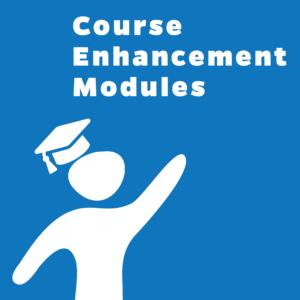References and Resources
References
Alliance for Education (2011). Adolescent literacy factsheet. New York: Carnegie Corporation of New York.
Bettinger, E., Boatman, A., & Long, T. B. (2013). Student supports: Developmental education and other academic programs. The Future of Children, 23(1). Retrieved from www.futureofchildren.org
Deshler, D., (2013, September 19). The Common Core State Standards and Students with Learning Disabilities. Audio can be retrieved from http://ceedar.education.ufl.edu/disciplinary-literacy/multimedia
Moje, E. B. (2007). Developing socially just subject-matter instruction: A review of the literature on disciplinary literacy teaching. Review of Research in Education, 31, 1-44.
National Center for Education Statistics. (2011). Grade 12 reading and mathematics 2009 national and pilot state results. Washington, D.C.: Institute of Education Science. Retrieved from http://nationsreportcard.gov/ltt_2012/age17r.aspx#0-5.
National Governors Association Center for Best Practices, Council of Chief State School Officers. (2010). Common Core State Standards. Washington, D. C: Authors.
Shanahan, T., & Shanahan, C. (2012). What is disciplinary literacy and why does it matter? Topics in Language Disorders, 32(1), 7–18.
Shanahan, T. (2013, September 20). Disciplinary Literacy, Close Reading, and the Common Core State Standards. Audio can be retrieved from http://ceedar.education.ufl.edu/disciplinary-literacy/multimedia
Additional Resources
Biancarosa, G., & Snow, C. (2006). Reading next: A vision for action and research in middle and high school literacy. A report to Carnegie Corporation of New York (2nd ed.). Washington, DC: Alliance for Excellent Education.
Bulgren, J., Deshler, D. D., & Lenz, B. K. (2007). Engaging adolescents with LD in higher order thinking about history concepts using integrated content enhancement routines. Journal of Learning Disabilities, 40(2), 121-133.
Carnegie Council on Advancing Adolescent Literacy. (2010). Time to act: An agenda for advancing adolescent literacy for college and career success. New York, NY: Carnegie Corporation of New York.
Faggella-Luby, M., Graner, P., Deshler, D, and Drew, S. (2012). Building a house on sand: Why disciplinary literacy is not sufficient to replace general strategies for adolescent learners who struggle. Topics in Language Disorders, 32(1), 69-84.
Graham, S., & Hebert, M. A. (2010). Writing to read: Evidence for how writing can improve reading. A Carnegie Corporation Time to Act Report. Washington, DC: Alliance for Excellent Education.
Graham, S., & Perin, D. (2007). Writing next: Effective strategies to improve writing of adolescents in middle and high schools. A report to Carnegie Corporation of New York. Washington, DC: Alliance for Excellent Education.
Hall, T., Meyer, A., & Rose, D. (2012). Universal design for learning in the classroom. New York: Guilford Press.
Heller, R. & Greenleaf, C. (2007). Literacy instruction in the content areas: Getting to the core of middle and high school improvement. Washington, DC: Alliance for Excellent Education. Retrieved from www.all4ed.org
Jetton, T. & Shanahan, C. (2012). Adolescent literacy in the academic disciplines. New York: Guilford Press.
Klingner, J., Vaughn, S., Boardman, A., Swanson, E. (2012). Now we get it!: Boosting comprehension with collaborative strategic reading. San Francisco: Jossey-Bass.
Kosanovich, M. L., Reed, D. K., & Miller, D. H. (2010). Bringing literacy strategies into content instruction: Professional learning for secondary-level teachers. Portsmouth, NH: RMC Research Corporation, Center on Instruction.
Lee, C. D. & Spratley, A. (2010). Reading in the disciplines: The challenges of adolescent literacy. New York: Carnegie Corporation of New York.
National Institute for Literacy, National Institute for Child Health and Human Development, & U.S. Department of Education. (2006). What content-area teachers should know about adolescent literacy. Washington, DC: Authors.
Schoenbach, R., Greenleaf, C., & Murphy, L. (2102). Reading for understanding: How Reading Apprenticeship improves disciplinary learning in secondary and college classrooms. San Francisco, CA: Jossey-Bass
Shanahan, C., Shanahan, T., & Misischia, C. (2011). Analysis of Expert Readers in Three Disciplines History, Mathematics, and Chemistry. Journal of Literacy Research, 43(4), 393-429.
Tomlinson, C. A. & Allan, S. D. (2000). Leadership for differentiating schools and classrooms. Alexandria, VA: Association for Supervision and Curriculum Development.
Contributing Developers
Hougen, M. C. & Corbett N. (2013). Course Enhancement Module: Disciplinary Literacy. Gainesville, FL: The CEEDAR Center. Retrieved on [month day, year,] from http://www.ceedar.org
You have reached the last page of this Course Enhancement Modul
You have reached the last page of this Course Enhancement Module.



